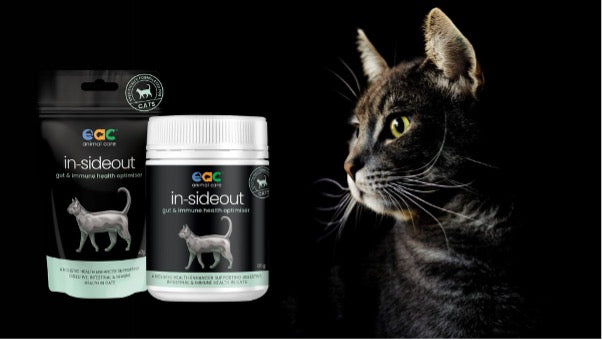Managing sand accumulation is often a difficult task. However, in an initial trial by West Coast Veterinary Hospital, In-sandout has been shown to be a reliable solution for reducing the accumulation of sand.
Below, we discuss sand impaction and sand enteropathy, explain how In-sandout works and provide relevant data from the In-sandout trial to illustrate the product’s effectiveness.
What Is Sand Impaction?Sand impaction (or sand colic) occurs when a horse ingests sand while eating grass, hay or other feed products. If a horse consumes sand, it can cause problems in the gastrointestinal tract and abdomen, including impaction, a serious condition that can cause pain, discomfort, and even death.
Impaction is a common cause of colic, and a horse with sand impaction will likely display the same signs as a colicky horse. For example, not passing manure, kicking at the abdomen, rolling and pawing.
What Causes Sand Enteropathy?Sand enteropathy is a condition caused by the accumulation of sand in the large colon. Sand is swallowed when horses or foals are kept on sandy pastures or are fed hay or grain in a sandy area (paddock, stall or pasture).
The accumulated sand inflames and irritates the colon wall. Consumption of large amounts of sand, which then collects in the large intestine, can produce diarrhea, weight loss or colic.
How Does In-sandout Work?The use of psyllium husk and magnesium sulphate is well established as a protocol for the treatment of sand impactions in horses. Several studies exist showing that this is an effective treatment for sand enteropathy.
Psyllium husk are used as a sand accumulation management tool that is used in feed. Some horses are resistant to the taste and texture of too much psyllium; therefore, combining the psyllium husk and magnesium sulphate in an easy to feed palatable pellet is the perfect option.
Psyllium absorbs liquids from the intestines and swells as it moves through the digestive tract, helping eject the sand from the GIT tract. The purely mechanical action of psyllium mucilage is to absorb excess water while stimulating normal bowel elimination.
Magnesium sulphate (Epsom salts) is the laxative most often used in the treatment of impactions. Its osmotic action results in the hydration of the impacted mass in the intestinal lumen.
The In-sandout TrialsMaterials and Methods:
The trial results below are from nine horses known to have previous issues with sand impactions. The trial lasted five days.
On day 0 of the trial, all horses had their abdomens radiographed for sand, and a “faecal sand test” was performed. The radiographs and sand tests were assessed by a veterinarian and graded from (0-4). The initial results were noted for each horse, and horses were broken into groups A and B.
Group Data
Group A was fed 0.6kg In-sandout equivalent for a 500 kg horse once daily, and Group B was Fed 0.3kg “in-sandout” equivalent for a 500 kg horse once daily.
- Day 1-5: Fed in-sandout in the morning to trial horses, observations taken by owners
- Day 6: All horses had their abdomens radiographed for sand, and a “faecal sand test” was performed.
These results were analysed versus the results of day 0. All owners filled out a questionnaire regarding their experience with feeding In-sandout and their observations.
The Results of the In-sandout Trial
A total of 17 horses were presented to West Coast Veterinary Clinic to participate in the In-sandout trial. Eight horses were excluded from the trial. The excluded horses showed no detectable sand within the large colon.
Of the remaining horses, nine were split randomly into Groups A and B (see previous group descriptions).
The amount of sand present within the large colon of each was classed as follows:

The horses in Group A ranged from mild to severe sand burdens. Three out of four horses ate the product.

The horses in Group B ranged from mild to moderate sand burdens. All horses in this group ate the product.

All horses that presented for assessment underwent a faecal sand test. Results of the tests were mixed with some horses with severe sand burdens having no sand in their faeces, whilst others with trace or no sand having sand present in their faeces. This suggests that faecal sand testing may be an unreliable indicator for sand enteropathy in horses.
However, the above final assessments do show a reduction in sand present within the large colons of all horses that fed In-sandout.

CLICK TO VIEW in-sandout
A Reliable option for sand accumulation management.This trial demonstrates that In-sandout is a reliable solution for sand accumulation management. The product’s combination of psyllium husk and Magnesium sulphate is likely to promote the effective removal of sand from the large colon.
Several horses with severe or moderate sand burdens cleared most or all of their sand build-up after being on a 5-day course of the product. That said, In-sandout may be the perfect product for managing your horse’s sand burden.
NB: Prior to feeding in-sandout ensure the horses bowel movements are regular. Do not feed if impaction/intestinal blockage is already present seek veterinary advice.
By Dr. Guangda Xue (Danny), BSc, MRes, PhD
Animal scientist specialised in gut health development and inflammation management





